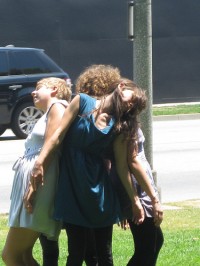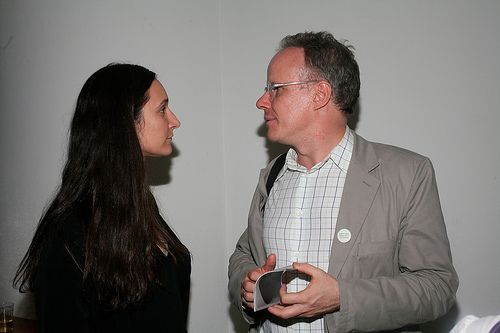Bettina Korek is the founder of ForYourArt, which according to the FYA website, is an interdisciplinary producer, meta curator, multi-media publisher, patronage cultivator, and more.
“Projects produced by ForYourArt,” the website says, “focus on promoting cultural philanthropy as we further develop tools for navigating the cultural landscape.”
Knowing Korek**, all that seems like understatement. In Los Angeles – and beyond, given her travel schedule – Korek is a focal point for sophisticated, big city public culture. She produces it, supports it, chronicles it, promotes it, broadcasts it, and best of all, marshals others to do much more of the same.
City / Culture sat down recently with Korek to talk about the state of the City she calls home, public art in general, and the role government can best play in the public realm The two-part conversation, which continues next week, has been edited for space and clarity. [**Disclosures: Jeremy Rosenberg is an unpaid contributor to FYA, and has a possible funded collaboration pending.] Image: bodycity performs at a Public Art Party, organized by ForYourArt, on June 5, 2010

City / Culture: What’s happening right now in Los Angeles?
Bettina Korek: Since the economy changed, people are allowing themselves – or are being forced – to take the time to address projects that they couldn’t before. There is an openness to experimental activities, and a sense of people collaborating with different groups, which leads to a cross-pollination of ideas.
City / Culture: What’s a good example of that openness?
BK: A project on the top of a lot of people’s minds is Watts House Project. It’s an idea that started with Rick Lowe, and Edgar Arceneaux has adapted. It’s this idea that art is community; art is urban redevelopment.
I’ve been thinking a lot about how the word ‘art’ has been flattened. What is art? What does it mean to be an artist? I keep hearing in different realms that the artist’s lifestyle could be a model that more people want to follow. That’s based both on the flexibility and the openness it provides to pursue passion projects – to give back to the community in ways that are productive and hands-on, versus giving money.
City / Culture: You’re big into organizations working together. Where does that come from?
BK: I’ve always been interested in institutions collaborating. I used to work at LACMA and while I was there I started an event that brought together the young patrons from LACMA, MOCA, the Music Center, and the Opera. Right now I’m working on a project called Pacific Standard Time, which is an unprecedented collaboration between over 40 institutions in Southern California.
That was what initially really drew me to the Watts House Project – that it was centered in a neighborhood with so much history, and that Edgar had a real interest in bringing in different cultural institutions to adopt parts of it.
Collaboration is hard work. It’s been fascinating to see firsthand through the process of Watts House Project, or Pacific Standard Time, or working with Hans Ulrich Obrist, getting people to feel that they are on the same page, this idea that seeing is not the same as understanding.
I was looking at Yoko Ono’s website and you click on the little video and she’s like, “Hello, I love you. We’re on the same page.” I’ve been thinking a lot about that. It’s something we say kind of flippantly. We’re in an era where it’s so easy to be topically connected, but being deeply connected is something else.
City / Culture: If seeing is not the same as understanding, then is the same true for studio and public art?
BK: I think so. Public art is also a term that’s been flattened. There are different kinds of public art: Public art that’s meant to be overtly legible as art, public art that’s meant to blend in with the media around it, public art that’s temporary, public art that’s permanent. In entertainment and music, we have very defined categories.
But in public art, people don’t have the words, or the classification system. Public art can mean so many things. And so, it is. And, increasingly, artists are working across so many disciplines that to say someone is a visual artist or performance artist, that doesn’t really do it.
City / Culture: I take it that you think that’s a positive, especially given that your years-old website continues to be listed as a “beta.”
BK: “Beta Beta!“ ForYourArt is an experiment. It came out of my experience at LACMA working in curatorial, development, and communications. I felt like those activities didn’t intersect enough. In the for-profit world, there is specialization. In the non-profit world, it seems to me that people are trying to do things that they are not that good at. There has to be a way for them to work more productively with outside specialists. Everyone is sort of shouting at each other.
Coming next week: Part two of the interview.
Read past City / Culture columns here and contact the columnist.



_920_518_600_350_80_s_c1.jpg)












